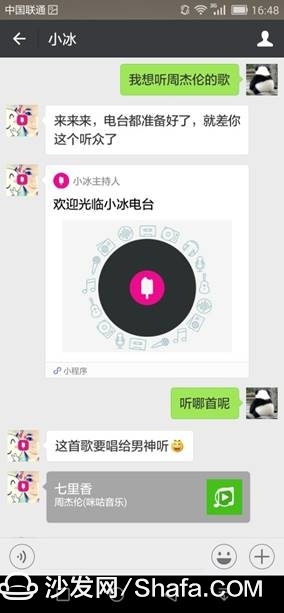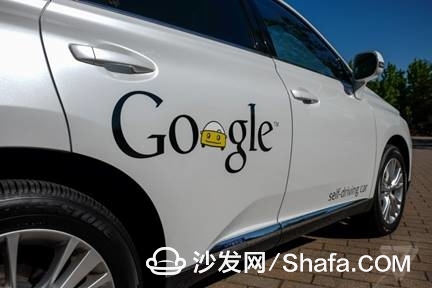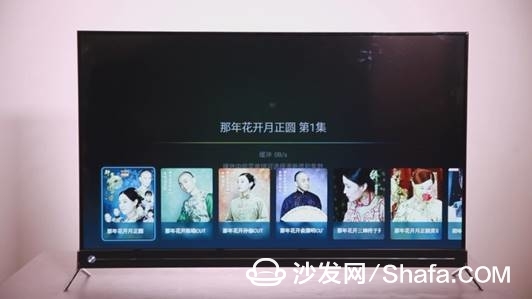Artificial Intelligence Voice 1.0: One Answer
Nowadays, work-intelligence speech technology has been widely used in digital, electronic, and industrial manufacturing fields and has become a topic of popular debate. However, at the beginning of development, it still had a lot of ingenuity. There are many discussions about the age of artificial intelligence, but at the consumer level, the artificial intelligence voice application that really enters the user's trial stage is probably after 2010. This phase of artificial intelligence voice technology forms a state of awareness based on voice interaction, which we will call the first stage.
At this time, the artificial intelligence voice application realizes natural speech recognition and semantic understanding at the technical level through the evolution of the algorithm and the input of a large amount of data. Data matching is performed on the content of the dialogue, and related topics are then retrieved to implement simple one-dimensional content. One answer. In the first stage, there is a great lack of self-learning and logical thrust. It is impossible to carry out in-depth interactions with the same dialogue content. Horizontal expansion and vertical development cannot meet the needs of users. For example, how do you ask the weather today? He retrieved today's weather data. Then you ask how is the weather tomorrow? He calls tomorrow's weather forecast. Today's weather and tomorrow's weather are just independent answers. We cannot connect and form a logic.

With regard to research on artificial intelligence voice technology, foreign companies have invested relatively early and have developed more comprehensively. Nuance, for example, has made outstanding achievements in speech recognition. Until now, it is still the world's largest speech technology company, and the number of patents and market share are far ahead. After that, Amazon, Apple, and Google all tapped intelligent voices and launched their own voice assistants. According to incomplete statistics, there are currently more than 1,000 companies in the world who specialize in artificial intelligence voices. There are more and more rising stars and more and more fields are involved. For example, Cortical.io, headquartered in Vienna, Austria, mainly provides new natural language understanding (NLU) solutions. KITT.AI was funded by the Alan Artificial Intelligence Institute and the Amazon Alexa Foundation to develop customizable hotword detectors and the ChatFlow Chat Engine. San Francisco's MindMeld provides interactive artificial intelligence platforms and more.
Artificial Intelligence Voice 2.0: Questions and Answers
As early as 2000, Bill Gates once proposed that "the next 10 years are the era of speech." The intelligent voice that we are talking about at present is called “natural language processing†(from Baidu) in academia. People in the industry believe that intelligent voice technology will become one of the most human-computer interaction methods for human beings. The development of computer technology and artificial intelligence brings hope for the development of intelligent voice interaction.
The deeper phase of artificial intelligence voice interaction - dialogue, asking questions and answers, including context logic. An example might be better understood. If a course is not opened in the past year, the question is: “How many classmates did not pass this course last year?†the machine answered “nothing†or “no class was opened last year. "? At the same time, the machine also needs to store in advance information that “no class was opened last yearâ€. Think about the knowledge and information that we didn’t understand when we were kids. This is an unimaginable amount of data. For another example, "I want to listen to Jay Chou's song", the machine will only show Jay Chou's song and cannot be played directly. This means that if you want to do one thing, you need to give the machine a clear instruction. Otherwise, it will be very annoying because you have to keep saying it.

Of course, at the "dialogue" level, it still remains at the stage of "man-machine conversation". The machine still remains passively accepting the stage of inputting large amounts of data by humans. Compared with the "question and answer" level, only the flow of information and data storage is larger, and machines still cannot Understand people's meaning in a deeper sense, unable to achieve self-study, self-growth, and voice communication with the machine can not be as natural as humans.
Artificial Intelligence Voice 3.0: Natural Interaction
When artificial intelligence enters the third stage, the biggest progress is the progress of interaction. Not only does it only ask questions and answers, it not only includes context logic. Artificial intelligence hardware can integrate various environmental information and make different decisions or recommendations. In other words, in the process of interaction, the machine has more initiative, can provide more and better help for people, make people's lives more convenient, safer and more interesting.
There are two typical application scenarios. One is a smart car and the other is a smart home.
In 2010, the uncovered car project of Google Secret Research was exposed by the “New York Times†reporter, which caused a lot of shock. Unmanned cars, that is, self-driving cars, also called smart cars, mainly sense the road environment through the on-board sensing system, and rely on the artificial intelligence system in the car to automatically plan the route and reach the intended destination.

When driving on open roads, Google Driverless Vehicle recognizes and analyzes the traffic environment information of passing vehicles, pedestrians, and roads, providing a basis for decision-making of the system. After a long period of “learningâ€, the tactical neurons possessed by artificial intelligence will become more proficient and efficient, and will form a human-like “feeling†that can handle emergencies in the driving process in a timely manner.
In January 2016, the National Highway Traffic Safety Administration (NHTSA) issued an open letter on its website indicating that the artificial intelligence system adopted by Google’s driverless cars could be considered a “driver†under current federal law regulations. This is considered to be a milestone in the development of artificial intelligence. It also indicates that "intelligence" can be perceived, judged, reasoned and made decisions like "artificial". It can achieve active control and better human-computer interaction and collaboration.
In the field of smart homes, the development direction of artificial intelligence is also human-computer interaction, simple operation, and self-judgment and decision making through big data. Changhong recently launched a new Q5K artificial intelligence television, focusing on semantic understanding and fuzzy search. There is no need for absolutely clear instructions. Artificial intelligence televisions can recognize and understand the user's semantics. For example, when the user says "too dark," the TV can understand what it means and know what to do, rather than having to wait for the user to say "adjust brightness." Another example is the recent hit TV drama "That year is full bloom that month", the name is too long many people can not remember, but as long as you say "I want to see the full moon", Changhong artificial intelligence TV can also be found This film. If you can't even remember these words, say "I want to watch Chen Xiao's TV series." It will also recommend this movie based on hit video and television data. Even when it comes to “I want to see Chen’s husband’s TV dramaâ€, this TV can also understand that what you said is the 8th achievement that this one starring Chen Xiao and most recently hitting “The Year of the Flower†and is You play it out.

This means that the machine really has a "brain" that can sense, interact, understand, and make decisions. Therefore, we can better serve humanity.
Smart TV/box information can focus on smart TV information network sofa butler (http://), China's influential TV box and smart TV website, providing information, communication, TV boxes, smart TVs, smart TV software, etc. Answering questions.
New Products
SHENZHEN CHONDEKUAI TECHNOLOGY CO.LTD , https://www.siheyidz.com